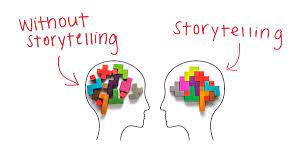The Art of Editorial Excellence
Editorial excellence is not just about putting words on a page; it’s about crafting a narrative that captivates, informs, and inspires. It is the hallmark of quality journalism and publishing, setting the standard for integrity, accuracy, and creativity in storytelling.
The Pillars of Editorial Excellence
At the core of editorial excellence are several key principles:
- Accuracy: Every fact must be verified, every source cross-checked. Accuracy is non-negotiable in maintaining credibility.
- Clarity: Complex ideas should be communicated clearly and concisely to ensure understanding by all readers.
- Relevance: Editorial content should be timely and relevant to the audience it serves, addressing their interests and concerns.
- Ethics: Upholding ethical standards is paramount. Editors must navigate potential conflicts of interest with transparency and integrity.
- Creativity: Editorial excellence also involves pushing boundaries creatively, experimenting with new formats and styles while staying true to the publication’s voice.
The Role of Technology in Editorial Excellence
In today’s digital age, technology plays a crucial role in enhancing editorial processes. From AI-powered editing tools that improve grammar and style consistency to data analytics that inform content strategy, technology can streamline workflows and elevate editorial quality.
The Impact of Editorial Excellence
Editorial excellence not only ensures the credibility of a publication but also fosters reader trust and loyalty. When readers know they can rely on a publication for accurate information presented in an engaging manner, they are more likely to return for more content.
In Conclusion
Editorial excellence is both an art and a science. It requires dedication to truth, commitment to craft, and openness to innovation. By upholding the highest editorial standards and embracing technological advancements, publications can continue to inspire, inform, and connect with audiences in meaningful ways.
Five Essential Tips for Achieving Editorial Excellence
- Maintain a consistent tone and style throughout the content.
- Proofread carefully to catch any spelling or grammar errors.
- Ensure that all facts and information presented are accurate and up-to-date.
- Use engaging headlines and subheadings to capture readers’ attention.
- Incorporate feedback from peers or editors to improve the overall quality of the content.
Maintain a consistent tone and style throughout the content.
To achieve editorial excellence, it is crucial to maintain a consistent tone and style throughout the content. Consistency in writing voice not only enhances readability but also strengthens brand identity and establishes a sense of coherence for the audience. By adhering to a unified tone and style, writers can ensure that their message resonates effectively and leaves a lasting impression on readers, reinforcing the publication’s credibility and professionalism.
Proofread carefully to catch any spelling or grammar errors.
To uphold editorial excellence, it is essential to meticulously proofread written content to identify and rectify any spelling or grammar errors. Thorough proofreading not only ensures the accuracy and professionalism of the text but also enhances its clarity and readability. By dedicating time to reviewing and refining the language used in a piece, editors demonstrate a commitment to quality and precision in their work, ultimately contributing to the overall integrity of the publication.
Ensure that all facts and information presented are accurate and up-to-date.
It is paramount to uphold editorial excellence by ensuring that all facts and information presented are accurate and up-to-date. By meticulously verifying the accuracy of content and keeping information current, publications can maintain their credibility and trustworthiness among readers. This commitment to accuracy not only enhances the quality of the editorial work but also demonstrates a dedication to providing reliable and valuable content to audiences.
Use engaging headlines and subheadings to capture readers’ attention.
To uphold editorial excellence, it is essential to utilise captivating headlines and subheadings that not only grab the readers’ attention but also provide a glimpse of the content’s essence. Engaging headlines serve as the first point of contact with the audience, enticing them to delve deeper into the article. Subheadings further aid in guiding readers through the text, breaking down complex information and maintaining their interest. By crafting compelling titles and subheadings, publications can effectively draw readers in and enhance their overall reading experience.
Incorporate feedback from peers or editors to improve the overall quality of the content.
To enhance editorial excellence, it is essential to welcome and incorporate feedback from peers or editors. By seeking input from others, writers can gain valuable perspectives and insights that can help refine and elevate the quality of the content. Constructive criticism and suggestions for improvement not only enhance the accuracy and clarity of the writing but also contribute to a collaborative environment that fosters continuous growth and learning. Embracing feedback as a tool for enhancement ultimately leads to more polished and impactful content that resonates with readers on a deeper level.



